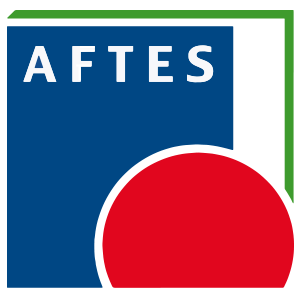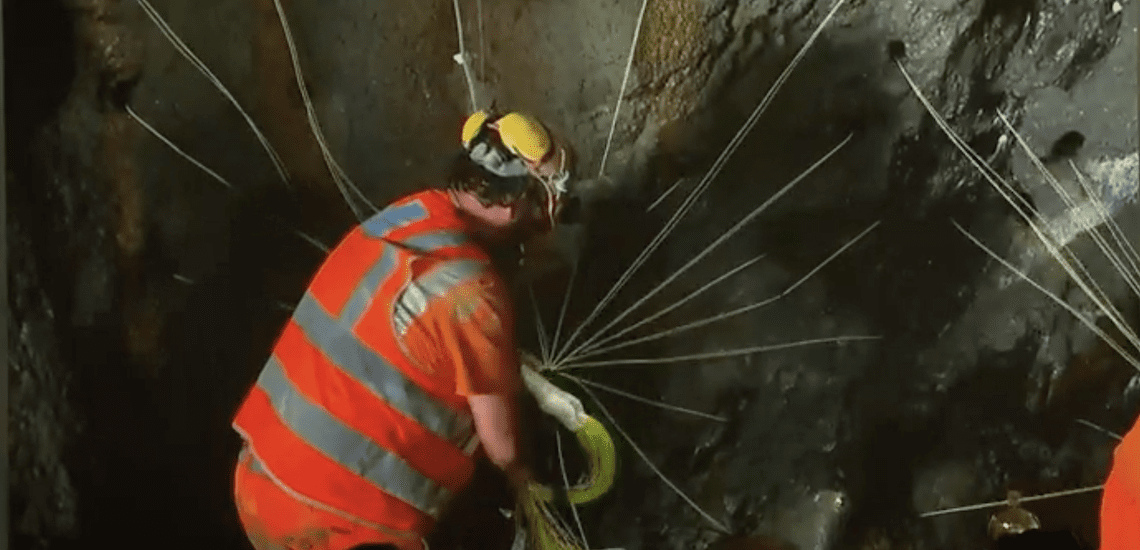
The second Gotthard tunnel has started. The first road tunnel is to be lined to allow maintenance and to create emergency lanes.
On 29 September 2021, work on the second tunnel began with a symbolic blast. The start of work has been delayed since last spring due to the pandemic, reported Swiss Radio and Television (RTS).
A decision voted by the Swiss electorate
The Gotthard road tunnel, which crosses the Alps between Göschenen (UR) and Airolo (TI), is one of the largest and busiest in Europe.
The decision to build a second tunnel alongside the current one has been controversial. So it was the subject of a referendum in February 2016. In fact, many residents feared an increase in traffic, and many voters in the cantons of Vaud and Geneva, which are far from the future structure, did not want federal funds to be spent on it.
Mr Röthlisberger presented the tunnel as a safety improvement rather than a means of reducing congestion. consequently, it will allow maintenance of the first tunnel without isolating a whole part of the country from the rest of Switzerland.
When fully operational, each of the two tunnels will have only one lane of traffic so that traffic capacity through the Gotthard will not be increased. The existing second lane in each tube will be an emergency and service lane.
The second Gotthard road tunnel in brief
Description
The second Gotthard road tunnel is 16.9 km long and connects Göschenen in the canton of Uri with Airolo in the canton of Ticino. The main tunnel will be driven parallel to the first tube, east of the existing service and infrastructure gallery, at a distance of about 70 metres.
The second tube will be connected to the existing tunnel system. The tunnel has a circular cross-section with a diameter of approximately 12.7 metres. The roadway and hard shoulder will be approximately 8 metres wide. A total of 68 connecting galleries are planned at 250 metre intervals along the entire length of the tunnel. The service and infrastructure gallery has its own ventilation system; an overpressure compared to the main tunnel prevents any intrusion of smoke or gas into the gallery.
The space above the roadway is available for ventilation systems and will be connected to existing ventilation shafts. The cavity under the roadway is designed to accommodate two service shafts. The first shaft will house all the pipes necessary for the operation of the tunnel (electricity, communication and fire-fighting water). The second shaft will accommodate third-party infrastructure.
Geology
From the north, the tunnel passes through the Aare Massif, which consists mainly of granite and para-gneiss. The tunnel boring machine must then cut through the Mesozoic and Permo-Carboniferous rocks of the Urseren sector. The third formation is the Gotthard massif, which consists mainly of gneiss and granite. The Nufenen area near the Airolo Portal consists of meta-sediments. In the portal area, i.e. at the tunnel entrances, there are sections of loose rock of varying lengths.
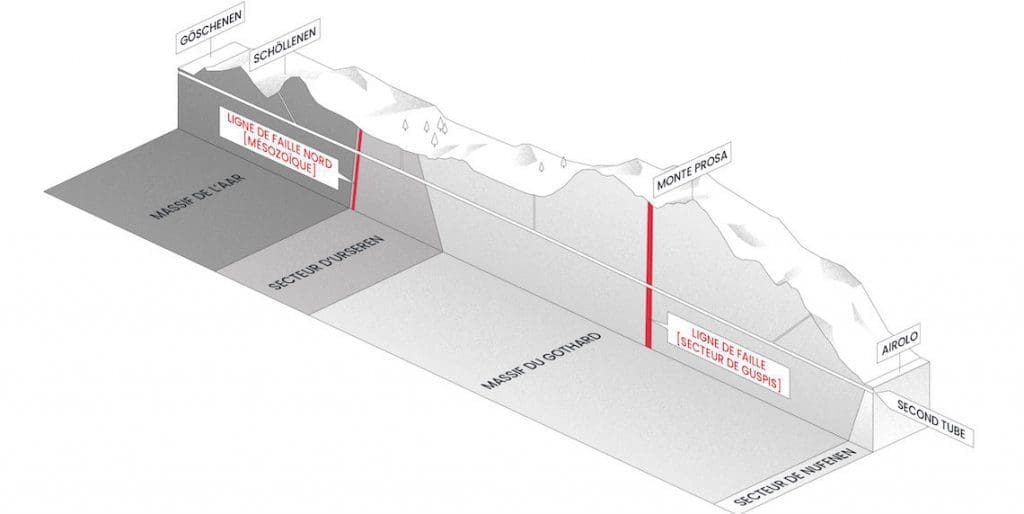
Technique for the second Gotthard road tunnel
Almost all of the 16.9 kilometres of the second tube will be built using a tunnel boring machine. Only a few short sections, called “disturbance zones”, will require blasting.
The TBM is a single shield TBM-S with a shield length of 10 metres. It has a diameter of 12.40 metres. Its rotation speed of 4.6 revolutions per minute allows it to advance at an average of 2 metres per hour. Two tunnel boring machines (TBMs) are used for the breakthrough, one from the north and one from the south. Once the breakthrough is complete, the tunnel boring machines will have to be dismantled and removed.
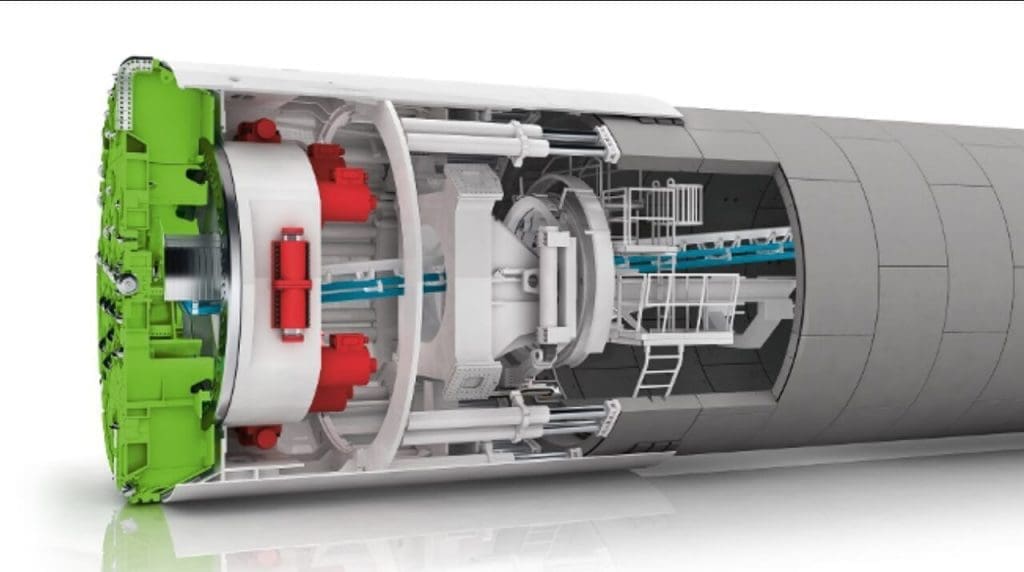
In both the north and south, there is a disruption zone that causes technical difficulties: the northern disruption zone is about 270 metres long and lies about 4.1 kilometres after the Göschenen portal, while the southern disruption zone is about 300 metres long and lies about 4.9 kilometres after the Airolo portal. Of course, both of these fault zones cannot be broken through with a tunnel boring machine and must first be blasted. Only then can the tunnel boring machines resume their advance. Access to these zones is via a dedicated tunnel.
Environnement
The construction of the tunnel requires the extraction of 7.4 million tonnes of rock.
1.8 million tonnes of excavated material is immediately converted into new construction material. About 1.9 million tonnes will be used by FEDRO to reshape the terrain and cover the motorway at Airolo. Finally, 3.5 million tonnes of rock will be used to renaturalise the shallow area of Lake Uri.
Contaminated excavated material and construction waste, such as demolition debris, metal parts, bulky objects or other waste (wood, glass, plastic, pipe sections, etc.) are sorted, analysed and disposed of directly in accordance with the regulations.
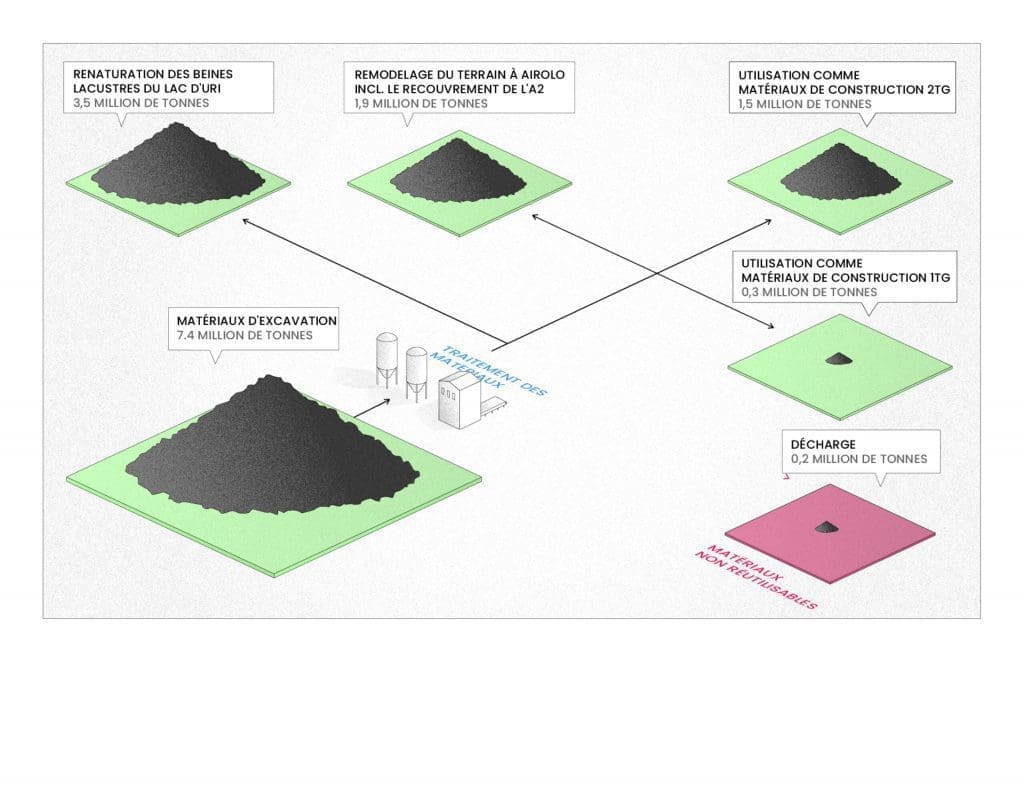
The second Gotthard road tunnel is expected to cost 2.14 billion Swiss francs. When the second tube is completed, the existing tube will be closed for maintenance. The first tunnel, opened in 1980, will remain closed for three years while it is being refurbished. Both tubes are therefore expected to be operational from 2032.
The illustrations are taken from the website “https://gotthardtunnel.ch/fr/le-second-tube”. Click below to access it.
Pour plus d’informations
